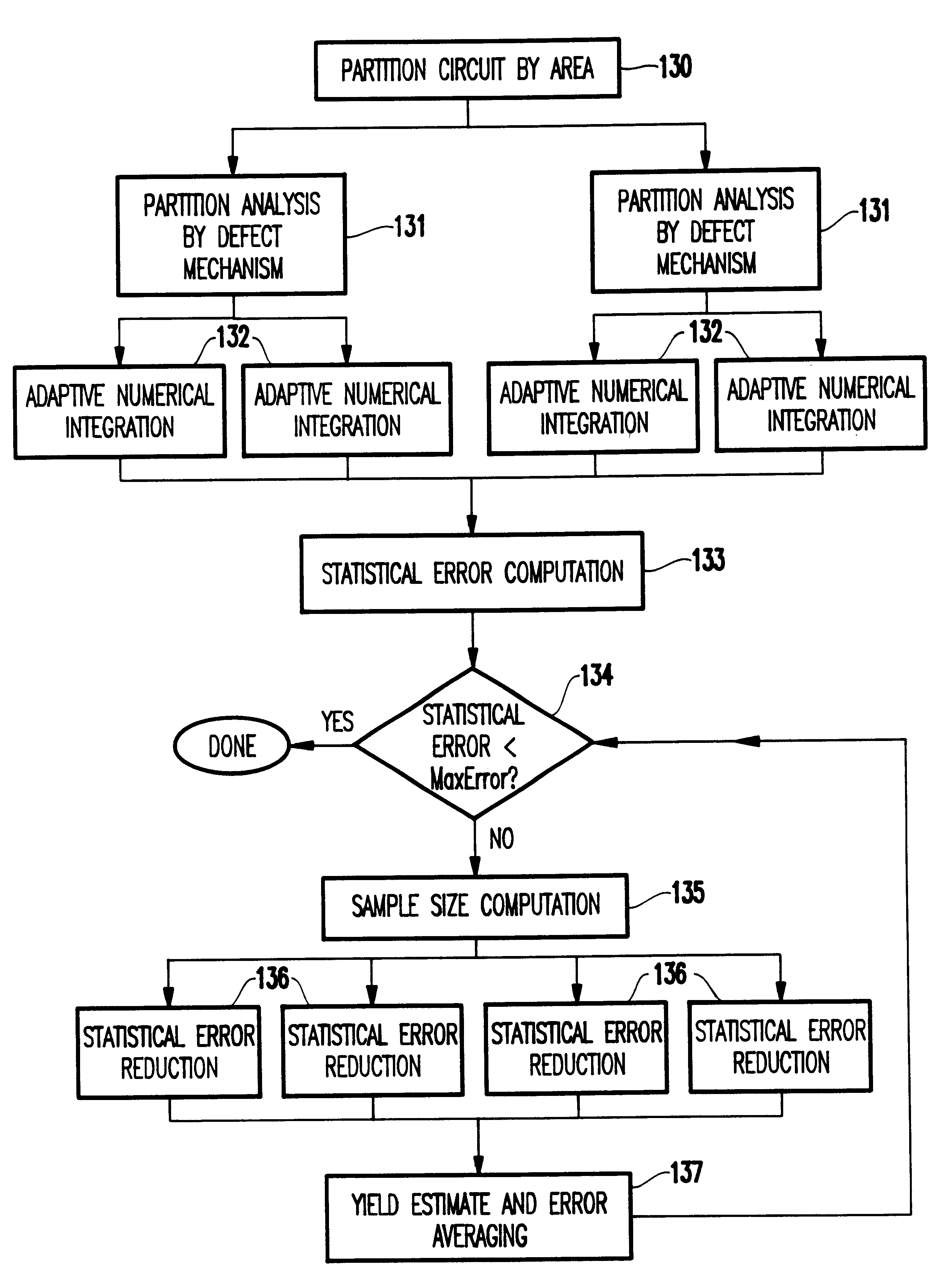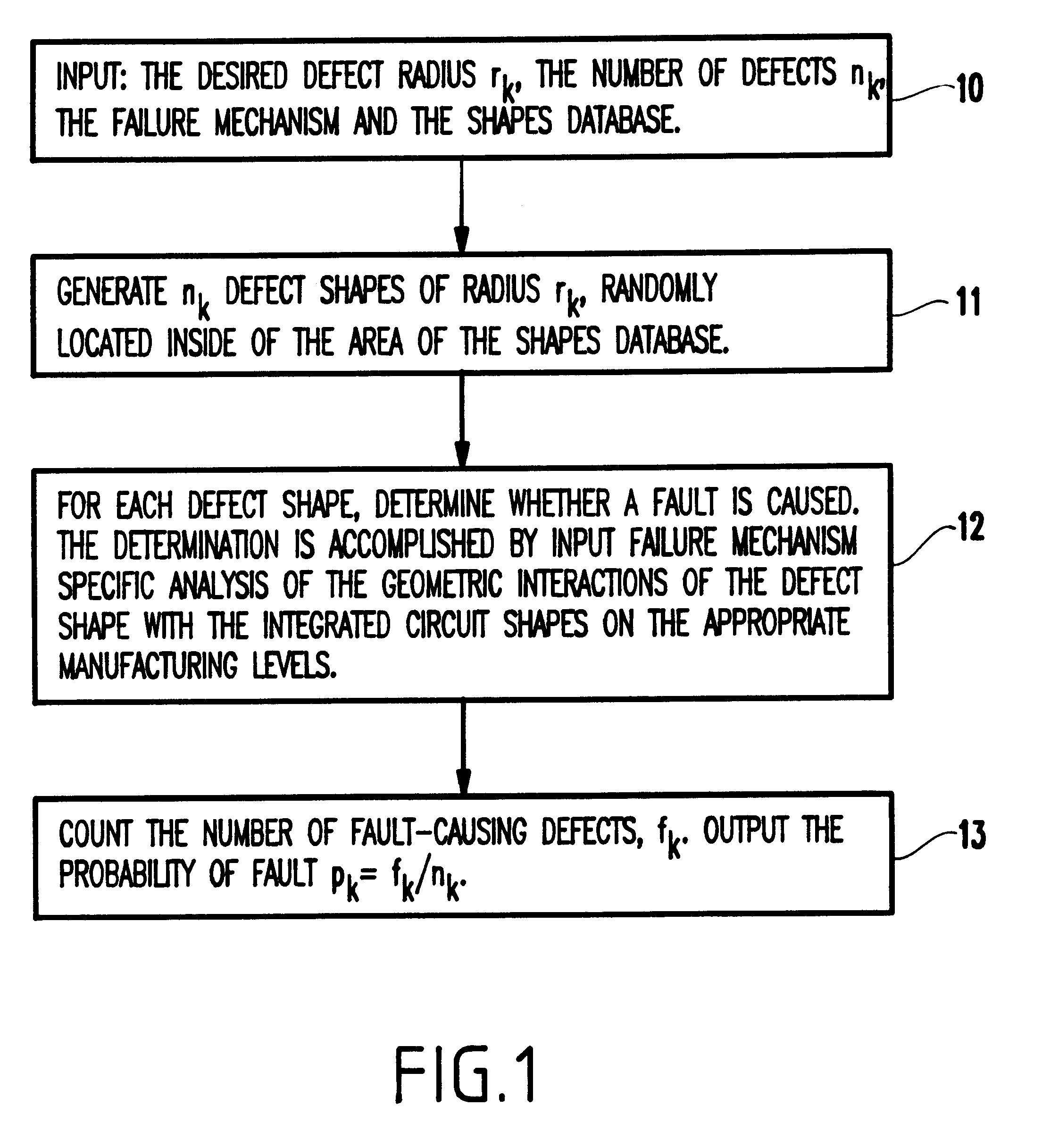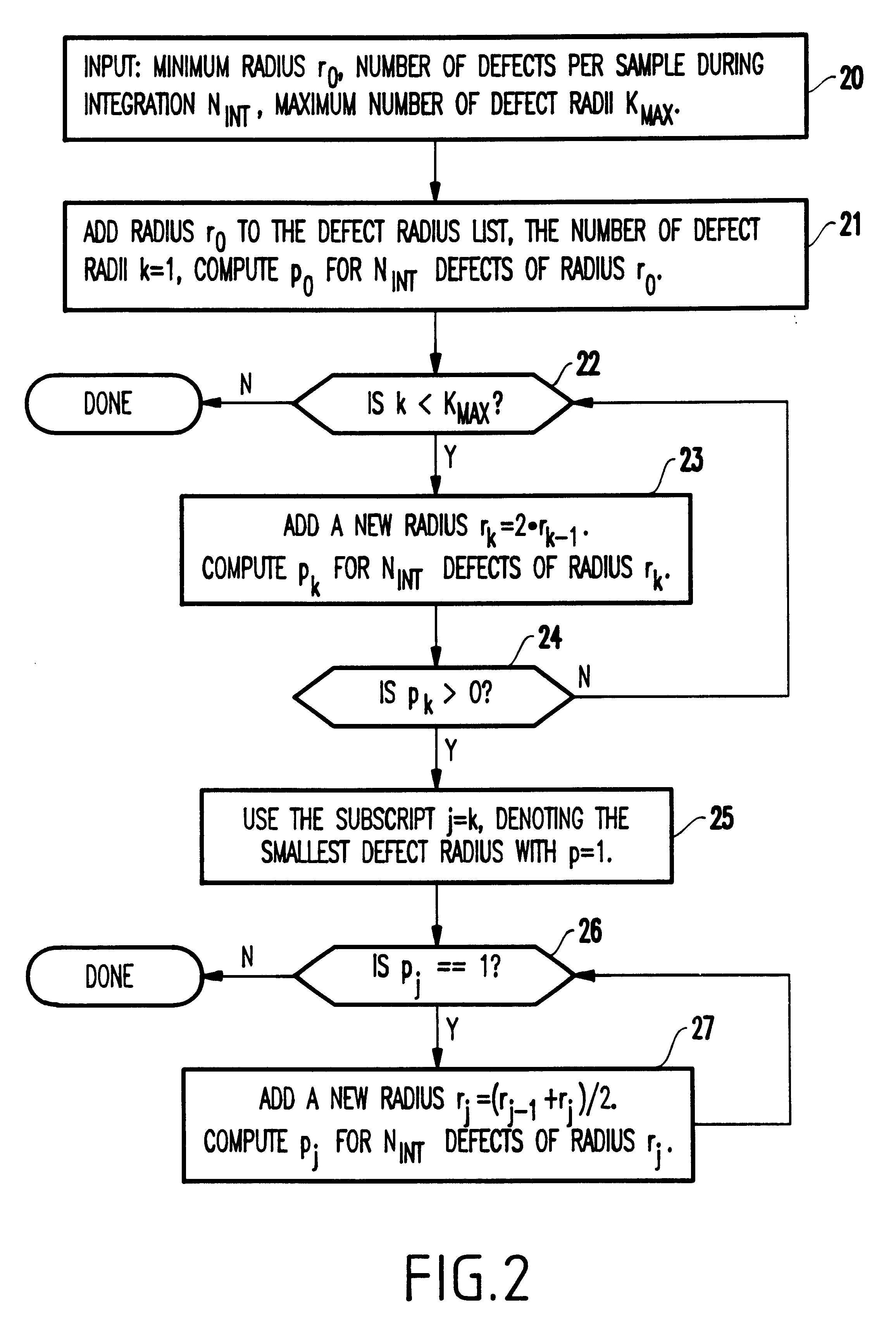Method for prediction random defect yields of integrated circuits with accuracy and computation time controls
a technology of random defect and computation time control, which is applied in the direction of measurement devices, semiconductor/solid-state device testing/measurement, instruments, etc., can solve problems such as excessive computer resource expenditure on problems, failures, and inability to accurately predict random defect yields of integrated circuits
- Summary
- Abstract
- Description
- Claims
- Application Information
AI Technical Summary
Benefits of technology
Problems solved by technology
Method used
Image
Examples
Embodiment Construction
The electrical test yield of an IC may be predicted using a computer modeling program prior to the actual physical production. Such conventional modeling programs assess the circuit layout sensitivity to unintended opens or shorts, which may be the result of foreign material present in a clean room manufacturing environment.
In this application such particles of foreign matter on the surface of a wafer are referred to as defects, and those defects causing the circuit to operate in an unintended manner (electrical failure) are faults. The invention classifies faults into different defect mechanisms. Interacting defect mechanisms are collectively referred to as a failure mechanism. For example, a single layer of patterned metal wiring (metal 1) could have two failure mechanisms, one being a metal 1 open failure mechanism and the other being a metal 1 short failure mechanism. Each of these failure mechanisms would be made up of one or more defect mechanisms. Therefore, the metal 1 short...
PUM
 Login to View More
Login to View More Abstract
Description
Claims
Application Information
 Login to View More
Login to View More - R&D
- Intellectual Property
- Life Sciences
- Materials
- Tech Scout
- Unparalleled Data Quality
- Higher Quality Content
- 60% Fewer Hallucinations
Browse by: Latest US Patents, China's latest patents, Technical Efficacy Thesaurus, Application Domain, Technology Topic, Popular Technical Reports.
© 2025 PatSnap. All rights reserved.Legal|Privacy policy|Modern Slavery Act Transparency Statement|Sitemap|About US| Contact US: help@patsnap.com



